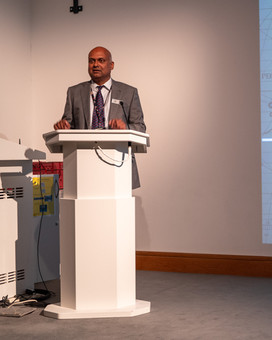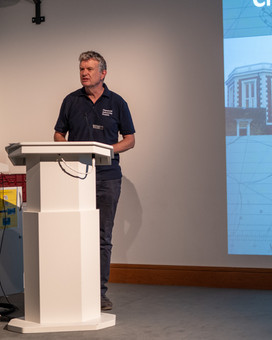Fly Me to the Moon, by Dr Megan Argo
- Phil Benson
- Sep 23, 2024
- 2 min read
Updated: Sep 27, 2024
(and other songs)
The first lecture of the Flamsteed Astronomy Society's 2024-25 season kicked off with our 25th Annual General Meeting where, dear reader, yours truly was duly elected to the committee - and immediately given a job to do ;-). With the dulcet, silky-smooth tones of AGM’s Bobby “Mighty Chair” Manoo fading fast, it was time to welcome our first speaker. Dr. Megan Argo, a radio astronomer based at the University of Central Lancashire specialising in radio supernovae, masers, and starburst galaxies, was here today to talk to the society about the Moon.

Theories for the formation of the Moon go back to ancient times, but Megan explained how the leading modern theory - the collision theory - doesn’t explain every detail. More on that later. Briefly, astronomers think that the early Earth was struck by a Mercury-sized planet, the resulting collision melting both, which then re-accreted into two new bodies: the modern Earth-Moon system. While the two bodies share a common origin, the Moon’s lack of atmosphere means that every impact from its formation 4.5 billion years ago is recorded on its surface - and these impacts continue today. This impact record gives us insight into the formation of the entire inner solar system, including Earth, which, due to erosion, plate tectonics, and other rock-recycling processes, can no longer be seen.

Early lunar exploration focussed on the larger “mare” features - lakes of long-cooled magma - but what’s on the far side? (Spoiler alert: it isn’t cheese!). The Soviet-era Luna 3 spacecraft addressed this with the first images, which were quickly followed up by more ambitious missions, including NASA’s Apollo missions of the 1960s and '70s. While arguably more political than scientific, these missions included a rich tapestry of scientific instrumentation and the return of a large number of lunar samples. More recently, probes from India and China have collected more data (and returned small samples), but the next stage of large-scale exploration and sample return/analysis will fall to NASA’s Artemis program and others.

So, what about that missing element in the theory? Some differences in the isotopic composition between elements in the rocks from the Moon and Earth remain unexplained by the giant impactor theory. To solve this puzzle, ambitious plans for future crewed missions are in development by both NASA and the ESA. Judging by the show of hands in the room, there will be no shortage of volunteers!






















Opmerkingen